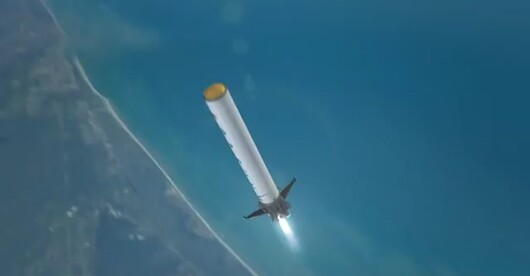SpaceX, the space transport company that made history by building the world's first private reusable spacecraft, is now embarking on a quest to build the holy grail of space engineering - a reusable launch rocket. Elon Musk, the company's CEO and Chief Technology Officer, announced recently at the National Press Club that computer simulations show their design to be technically feasible. This, Musk seems to suggests, is great news for those who have been considering moving to Mars.
A document issued by the Federal Aviation Administration reveals that the reusable launch vehicle (or RLV) is to be called Grasshopper (at least throughout the testing period). Both stages of the rocket are to be capable of finding their way back to the launch pad and performing a propulsive landing. Based on SpaceX's Falcon 9 rocket, the 106-foot (32 m) tall RLV is to be fitted with a Merlin-1D engine, four steel landing legs and a steel support structure to boot. It is the weight of the additional elements required to make the rocket reusable that poses the biggest technological challenge.
If the Earth's gravity was a little bit higher, the task would be nearly impossible. A slightly lower gravity would make it much easier. However, gravity being what it is, only around 2-3 percent of the lift-off weight is actually carried to orbit. This, Musk explains, leaves very little room for error. So little, in fact, that all the previous attempts at building a fully and rapidly reusable launch system failed to produce as much as a single design that would seem viable on paper. SpaceX already has such a design - now it's time for a reality check.

That the space industry is in desperate need of a RLV is beyond doubt. It becomes even clearer if we look at the numbers. The already mentioned Falcon 9 is the least expensive rocket in the world. It costs around US$50-60 million to launch, and only around $200,000 is down to propellant costs. A reusable rocket would reduce the cost of running a space mission 100-fold.
SpaceX's CEO sees a fully and rapidly reusable space launch system as a necessary development on the way to making life multiplanetary. Musk has expressed his interest in putting man on Mars in multiple interviews, and he considers it to be the long term goal of SpaceX's existence.
While the animation below is not 100 percent accurate, it does provide a pretty good idea of what SpaceX is working on. Musk's full speech to the National Press Club can be seen here.










